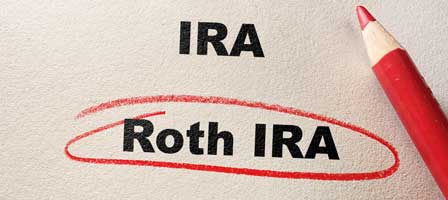TAX REFORM CRACKS DOWN ON IRA RECHARACTERIZATIONS
Article Highlights:
- Tax Trap
- Traditional IRA
- Roth IRA
- Traditional to Roth Conversions
- Undoing a Conversion
Note: This is one of a series of articles explaining how the various tax changes in the GOP’s Tax Cuts & Jobs Act (referred to as “the Act” in this article), which passed in late December of 2017, could affect you and your family, both in 2018 and future years. This series offers strategies that you can employ to reduce your tax liability under the new law.
If you have been or are anticipating converting your traditional IRA to a Roth IRA, you should be aware of a tax trap that Congress built into the Act.
Background: There are two types of IRA accounts:
- Traditional IRA – Is a retirement plan that generally provides a taxpayer with a tax deduction when a contribution is made to the account. Then when distributions are taken from the account they are fully taxable, including earnings.
- Roth IRA – Is also a retirement plan, but unlike the traditional IRA, a Roth IRA does not provide a tax deduction for the contribution. Thus, once a taxpayer reaches retirement age, all of the distributions are totally tax-free.
The big benefit here is that all the Roth account earnings over the years end up being tax-free as opposed to those from the traditional IRA, which are taxable. For that reason, many taxpayers take advantage of a provision in the law that allows them to convert a traditional IRA to a Roth IRA. However, for the year that a traditional IRA is converted to a Roth IRA, the converted amounts are taxable. Therefore, most IRA owners carefully plan the amount and timing of the conversions to be done in a year when they are in lower-than-normal tax brackets.
Prior law included a provision that allowed taxpayers to change their minds and undo a conversion by recharacterizing the Roth converted amounts back to traditional IRAs and thus also undoing the tax liability. This was helpful for those who had underestimated the tax liability, did not have money available to pay the tax, saw the value of the converted IRA drop (which would mean they’d be paying tax on a phantom value) or just changed their mind.
Unfortunately, the Act pulled the plug on recharacterizations, and beginning in 2018, taxpayers can no longer undo a conversion. Once a conversion is made, the IRA owner will have to live with the tax consequences. This rule applies for conversions from a traditional IRA, SEP or SIMPLE to a Roth IRA. The new law also prohibits recharacterizing amounts rolled over to a Roth IRA from other retirement plans, such as 401(k) or 403(b) plans.
However, for taxpayers who made a conversion to a Roth IRA in 2017, the IRS has announced the conversion may be recharacterized as a contribution to a traditional IRA if the recharacterization is made by October 15, 2018. A Roth IRA conversion made on or after January 1, 2018, cannot be recharacterized.
Recharacterization is still permitted with respect to other contributions. For example, an individual may make a contribution to a Roth IRA for a particular year and, before the due date for their income tax return for that year, recharacterize it as a contribution to a traditional IRA or vice versa.
If you have questions related to converting a traditional IRA to a Roth IRA, please give this office a call. If you would like to strategize on how to minimize the tax on a conversion, please call for an appointment.








Leave a Reply
Want to join the discussion?Feel free to contribute!